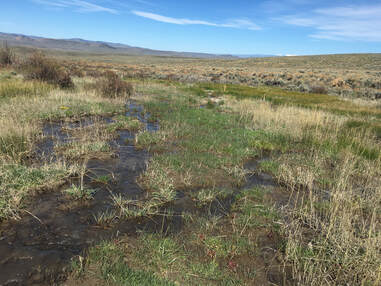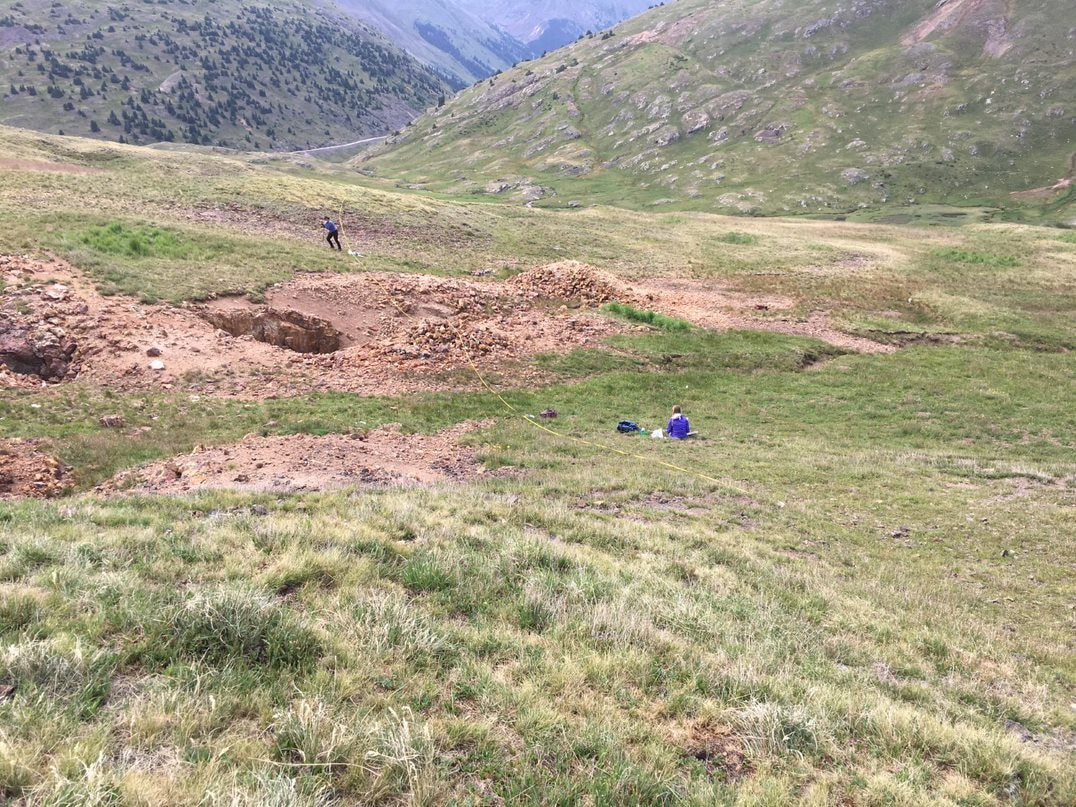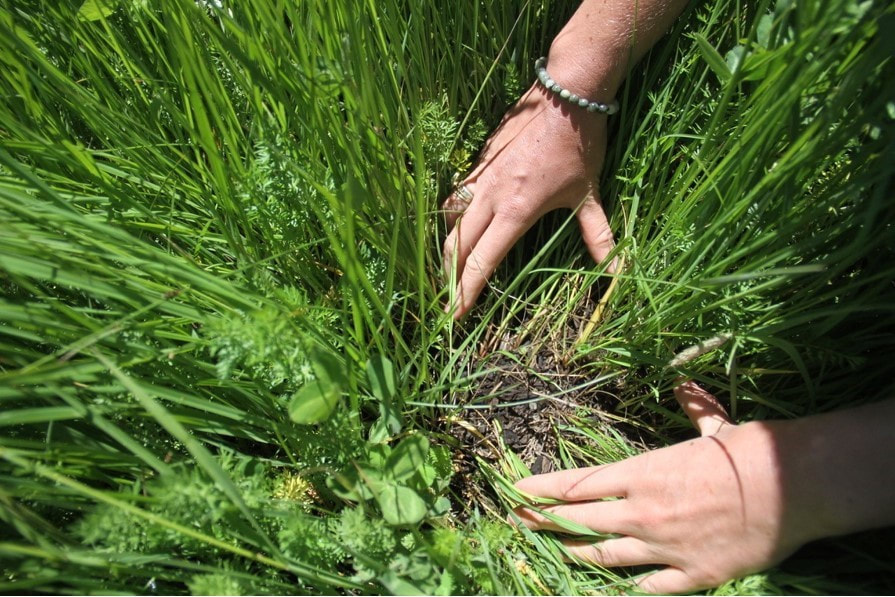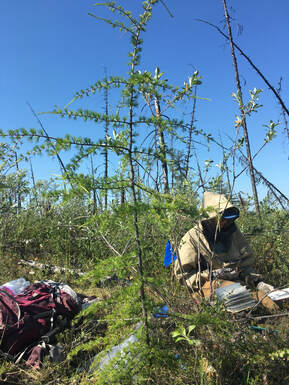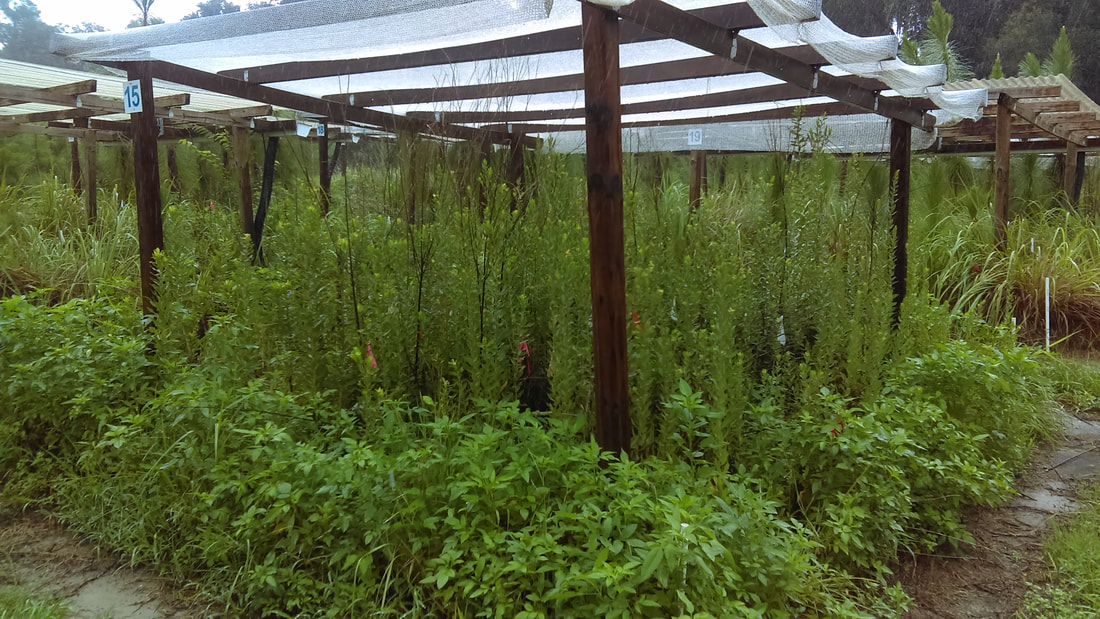Research
As an ecosystem ecologist, I incorporate concepts in both plant ecology and soil biogeochemistry to understand how climate change, land use change, and invasive species impact how carbon and nutrients are cycled in terrestrial ecosystems. In addition, I study how land management can be used to sequester carbon and build ecosystem resilience. In my research, I use a combination of experimental and observational studies that span a diversity of terrestrial ecosystems.
Current Projects
|
Wet Meadow Restoration and Climate Change Resilience
In partnership with the Upper Gunnison River Water Conservancy District, the Bureau of Land Management and the Colorado Parks and Wildlife we are quantifying whether restoring wet meadows within watersheds in the Gunnison Valley improves soil moisture retention compared to unrestored watersheds. Wet meadows are important habitat for the Gunnison sage-grouse, a threatened species under the Federal Endangered Species Act. These meadows have been extensively degraded over the years. Meadow restoration can increase brood-rearing habitat for the sage-grouse while simultaneously increasing the resilience of the ecosystem to climate change. Increased plant growth following restoration can increase organic matter inputs into the soil resulting in great soil organic matter and thus water holding capacity making these systems more resilient to drought. |
|
Restoration of Ecosystems Post Mining
Colorado has over 25,000 abandoned mines that have left ecosystems degraded and in some cases resulted in listed as Superfund sites. In collaboration with the non-profit Western Alliance for Restoration Management (WARM) we are studying the effectiveness of using biochar and compost amendments to restore these ecosystems to healthy and functional systems with increased carbon storing potential and resilience to a changing climate. |
|
Soil Amendments to Improve Resilience of Rangelands to Climate Change
We are directly working with three ranchers in the Gunnison Valley to test whether applying the soil amendment compost to their rangelands can provide a climate mitigation strategy through increased soil carbon sequestration and resilience to climate change through greater soil moisture retention. |
|
Larch Recruitment Following Fire in Siberia
The arctic region is warming at twice the rate as the rest of the globe. Thus, ecosystems in these regions are already being impacted by climate change, which has led to an increase in the frequency, intensity, and severity of fires in many boreal forests. These forests cover a large portion of vegetated land surface above the Arctic Circle, contain a significant proportion of the global carbon stocks, and are predicted to migrate northward into tundra with climate warming. As part of an Arctic Systems National Science Foundation grant, myself and my collaborators are investigating how an altered fire regime in Larch forests in Siberia impacts Larch recruitment and carbon stored in plants and soils. |
Past Projects
|
Invasive Plant Species Impact on Decomposition
Non-native, invasive species can have significant impacts on ecosystems by altering biogeochemical cycling through differences in nutrient uptake strategies, tissue chemical composition, and flammability. Cogongrass (Imperata cylindrica) is considered one of the most invasive species worldwide and can leave a once diverse pine understory into a monotypic stand of cogongrass. I decomposed litter and roots/rhizomes from the invasive grass Imperata cylindrica (Cogongrass) and two native species, Aristida stricta (Wiregrass) and Pinus palustris (Longleaf pine) in a common garden environment to test the impacts of invasion and drought on the decomposition of plant litter. |
Publications
Please contact me at [email protected] for copies of any of these publications.
Talucci, A. C., E. Forbath, H. Kropp, H. D. Alexander, J. DeMarco, A. K. Paulson, N. S. Zimov, and M. L. Loranty. 2020. Evaluating post-fire
vegetation recovery in Cajander larch forests in Northeastern Siberia using UAV derived vegetation indices. Remote Sensing
12:2970
Christianson, C. T., M. C. Mack, J. DeMarco and P. J. Grogan. 2018. Decomposition of senesced leaf litter is faster in tall compared to
low birch shrub tundra. Ecosystems 21:1564-1579.
DeMarco, J., T. Filley, and H.T . Throop. 2016. Patterns of woody plant-derived soil carbon losses and persistence after brush
management in a semi-arid grassland. Plant and Soil 406:277-293.
DeMarco, J., M. C. Mack, M. S. Bret-Harte, M. Burton and G. R. Shaver. 2014. Long-term warming and nutrient additions increase
productivity in tall deciduous shrub tundra. Ecosphere 5(6).
DeMarco, J., M. C. Mack and M. S. Bret-Harte. 2014. Effects of arctic shrub expansion on biophysical vs. biogeochemical drivers of
litter decomposition. Ecology 95(7):1861-1875.
DeMarco, J., M. C. Mack and M. S. Bret-Harte.. 2011. The effects of snow, soil microenvironment, and soil organic matter quality on N
availability in three Alaskan Arctic plant communities. Ecosystems 14:804-817.
Cardelus, C. L., M. C. Mack, C. Woods, J. DeMarco, and K. K. Treseder. 2008. The influence of tree species on canopy soil nutrient
status in a tropical lowland wet forest in Costa Rica. Plant Soil 318:47-61.
Bret-Harte, M. S., M. C. Mack, G. R. Goldsmith, D. B. Sloan, J. DeMarco, G. R. Shaver, P. M. Ray, Z. Biesinger, and F. S. Chapin III. 2008.
Plant functional types do not predict biomass responses to removal and fertilization in Alaskan tussock tundra. Journal of
Ecology 96: 713-726.
Classen, A. T., J. DeMarco, S. C. Hart, T. G. Whitham, N. S. Cobb, and GW Koch. 2006. Impacts of herbivorous insects on decomposer
communities during the early stages of primary succession in a semi-arid woodland. Soil Biology & Biochemistry 38: 972-982.
Talucci, A. C., E. Forbath, H. Kropp, H. D. Alexander, J. DeMarco, A. K. Paulson, N. S. Zimov, and M. L. Loranty. 2020. Evaluating post-fire
vegetation recovery in Cajander larch forests in Northeastern Siberia using UAV derived vegetation indices. Remote Sensing
12:2970
Christianson, C. T., M. C. Mack, J. DeMarco and P. J. Grogan. 2018. Decomposition of senesced leaf litter is faster in tall compared to
low birch shrub tundra. Ecosystems 21:1564-1579.
DeMarco, J., T. Filley, and H.T . Throop. 2016. Patterns of woody plant-derived soil carbon losses and persistence after brush
management in a semi-arid grassland. Plant and Soil 406:277-293.
DeMarco, J., M. C. Mack, M. S. Bret-Harte, M. Burton and G. R. Shaver. 2014. Long-term warming and nutrient additions increase
productivity in tall deciduous shrub tundra. Ecosphere 5(6).
DeMarco, J., M. C. Mack and M. S. Bret-Harte. 2014. Effects of arctic shrub expansion on biophysical vs. biogeochemical drivers of
litter decomposition. Ecology 95(7):1861-1875.
DeMarco, J., M. C. Mack and M. S. Bret-Harte.. 2011. The effects of snow, soil microenvironment, and soil organic matter quality on N
availability in three Alaskan Arctic plant communities. Ecosystems 14:804-817.
Cardelus, C. L., M. C. Mack, C. Woods, J. DeMarco, and K. K. Treseder. 2008. The influence of tree species on canopy soil nutrient
status in a tropical lowland wet forest in Costa Rica. Plant Soil 318:47-61.
Bret-Harte, M. S., M. C. Mack, G. R. Goldsmith, D. B. Sloan, J. DeMarco, G. R. Shaver, P. M. Ray, Z. Biesinger, and F. S. Chapin III. 2008.
Plant functional types do not predict biomass responses to removal and fertilization in Alaskan tussock tundra. Journal of
Ecology 96: 713-726.
Classen, A. T., J. DeMarco, S. C. Hart, T. G. Whitham, N. S. Cobb, and GW Koch. 2006. Impacts of herbivorous insects on decomposer
communities during the early stages of primary succession in a semi-arid woodland. Soil Biology & Biochemistry 38: 972-982.
